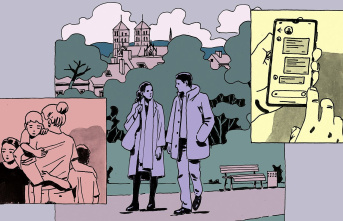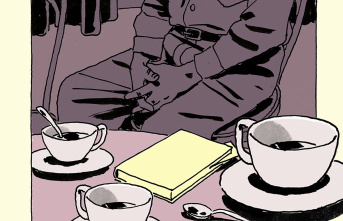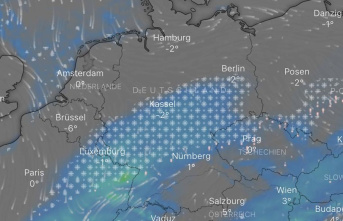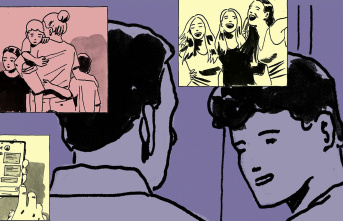Biting cold, wind and ice: none of this bothers the rock ptarmigan. In winter, it sleeps in its snow cave, well protected from the weather and enemies, and only comes out to look for food. But now everything is different. The animals are exposed to the weather without protection, there is no snow to hide - and foxes or birds of prey have an easy job. Because the white plumage can be seen from afar in the green landscape.
The consequences of climate change also affect animals that are specially adapted to winter conditions. "It's a fallacy what many think: if the winter has little snow, then the wild animals don't have any problems. That's logical for many - but unfortunately it's not true," says Florian Bossert, the Mangfallgebirge area manager of the Miesbach district office.
According to Bossert, stocks of marmots have already decreased in the Alpine region. There is more food because of the longer growing season. But due to a lack of snow, the insulation layer is missing during hibernation in the building.
The problem also affects other rodents, hedgehogs or bats. According to the Bund Naturschutz in Bayern, warm winters are one reason for the decline in garden dormouse, which wakes up more often in warm phases and consumes a lot of energy. This is missing in late winter in order to survive into spring.
Protection is offered in particular by loose snow, which falls when the temperature is below zero. Then air is trapped, which "acts like a down blanket," says Klaus Hackländer, wildlife biologist and board member of the German Wildlife Foundation. But increasingly there is wet snow - or none at all.
Mountain hares and ermines also suffer from the lack of white splendor. Like the rock ptarmigan, with their white fur they are currently becoming easy prey for enemies. Just the controversial snow cannons seem to create refuge: Ermines are said to survive better on snow-covered slopes because they are less discovered there by enemies, reports Bossert, citing observations in Tyrol.
The change from brown to white fur is not linked to the actual environment, but to the length of the day. A study published in the journal Science showed that snowshoe hares can only slightly speed up the color change.
"The worst thing that can happen to animals"
In view of the changing climate, there are two options for animals, says wildlife biologist Hackländer. "Either animals learn new behavior based on experience - or the genetic information of entire populations is changed." The latter is a slow process in which better adapted genes prevail from generation to generation. This may not be fast enough for small populations with few offspring.
For grouse that have specialized in the cold since the last ice age, such as rock ptarmigan, black grouse and capercaillie, the current winter is "the worst thing that can happen to the animals," says area manager Bossert. Without snow caves, they have to survive minus temperatures outside. Rock ptarmigans have been extinct as breeding birds in the Mangfall Mountains since 2010. Elsewhere, populations have thinned out. "It remains to be seen whether this chicken species will ever be able to adapt to climate change, because the population density and the number of offspring are low," says Hackländer.
In addition: The animals, already not gifted fliers in summer, take off from the ground even worse in winter. In order to be able to digest the winter food from the needles, they swallow stones - and in winter they are around a third heavier than in summer.
Even if hikers and ski tourers rarely see the animals: the disturbances often cost scarce energy reserves; the animals flee - and can die of exhaustion. Environmentalists and the German Alpine Association therefore warn to stay on the paths.
Efforts to protect the climate must be intensified
Alpine ibexes and chamois are also affected by the heat. They often scratch in vain for grasses and lichens when a layer of ice has formed on the ground from light snow during warm phases. They often get too warm. Chamois often seek shelter in the forest in summer. Last but not least, there is often a lack of food in the high mountains because the growth of grasses and herbs is shifting to spring due to climate change.
Individual winters with little snow are not a major problem, says Ulrich Berkmann, responsible for nature conservation at the German Alpine Association (DAV). "But you have to look at the far-reaching long-term consequences: How will the ecosystem be changed? That's definitely the more important question."
The warning in unison: Efforts to protect the climate must be intensified. Berkmann: "The conclusion is definitely: Keep climate change as small as possible."











